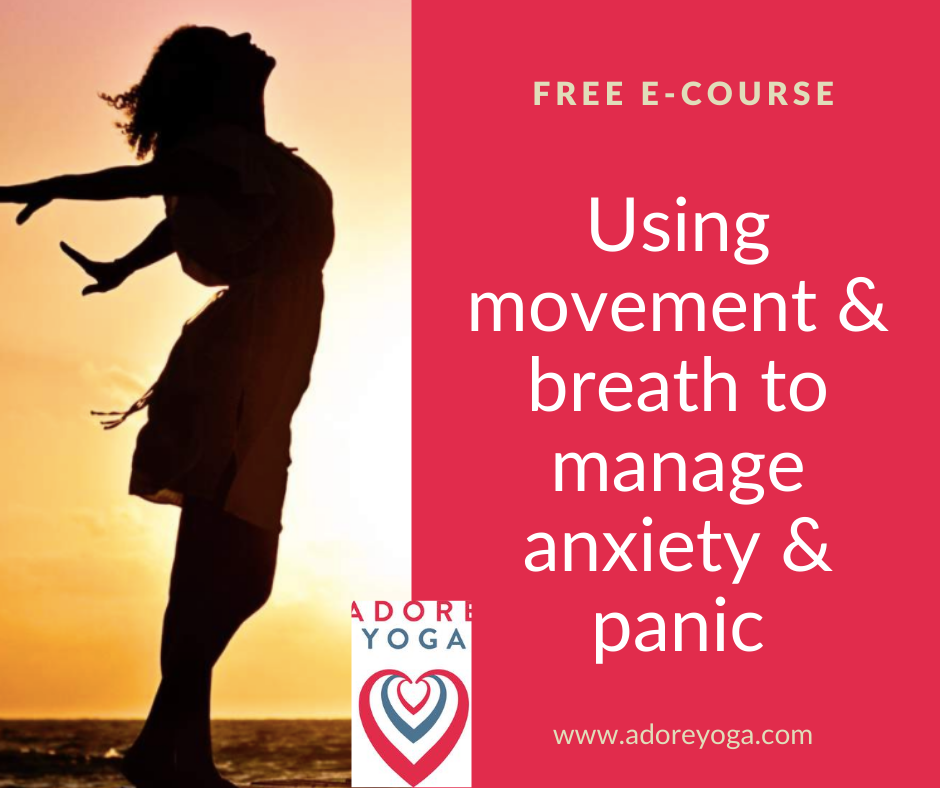Teaching pranayama to students with anxiety? Read this now.
Are you teaching pranayama to students with anxiety? Stop! There may be a better way to help them.
Learning how to breathe deeply and smoothly will help people with anxiety, right? Not necessarily. For many anxious students, focusing on the breath triggers more anxiety. On paper, teaching pranayama to your shallow-breathing, anxious students seems to make sense. But for some students, it can be unbearable. I know, because I was that student freaking out during a pranayama session.
I have long history of anxiety and panic attacks. It's what brought me to yoga in the first place. When I first heard about pranayama, I decided it was just what I needed. It made perfect sense - regulating the breath would calm my nervous system and prevent anxiety. But that's not how it worked in practice...
I found a yoga teacher who incorporated pranayama into her classes. During the first session, she taught nadi shodana, a simple practice where you block off one nostril at a time and breathe through the other one. I followed the instructions and immediately began to panic. Trying to breathe through one nostril felt suffocating - I was terrified.
The second time I tried pranayama, the teacher asked us to slow down our breathing by following her slow counting. Things seemed fine for a breath or two. But when she lengthened the count of the breath from 4 to 6, the panic was triggered. I felt wretched - what was wrong with me? Why did I react so badly to something that, on paper, was supposed to help?
As I spoke to other people with anxiety, I discovered I wasn't alone. Lots of people who have anxiety and panic attacks experience the same thing when they focus on their breath.
Does that mean yoga teachers should give up trying to teach students with anxiety how to regulate the breath? No! It just means you should try a different approach.
One of the most effective ways to teach healthy breathing patterns is to use the body. This follows the foundational yoga principle of Vinyasa Krama - starting with simple practices that are familiar to the student and slowly working towards more unfamiliar techniques. Moving the body is a much more familiar concept than regulating the breath. By teaching students carefully designed movements you can help them regulate the breath. Here are the steps to take:
- Teach a simple repetitive movement (ie. raising and lowering arms)
- Add the coordination of the breath (ie. when the student inhales, they raise the arms, when the student exhales, they lower the arms).
- When the student is able to follow steps 1 and 2 easily, you can start to teach movements that extend the breath further - especially the exhale.
Learn how to teach yoga and breath for anxiety - your free e-course
I've created a short e-course - Managing Anxiety Through Movement And Breath - to show you how you can integrate breath and movement together to support students with anxiety. It includes an overview of:
- The human nervous system
- Thenervous system and the breath
- Movements that regulate the breath
- Practice videos to to use in your teaching
Click the button below to Access the e-course:
Of course, this is not the only way you can support your students to manage anxiety and panic disorders, but it is a great way to start offering simple breath-based practices that your anxious students will love.
Upcoming courses
150hr Foundations of Yoga Therapy ONLINE (6 Sept - 22 Nov) - Earlybird ends 30 July


